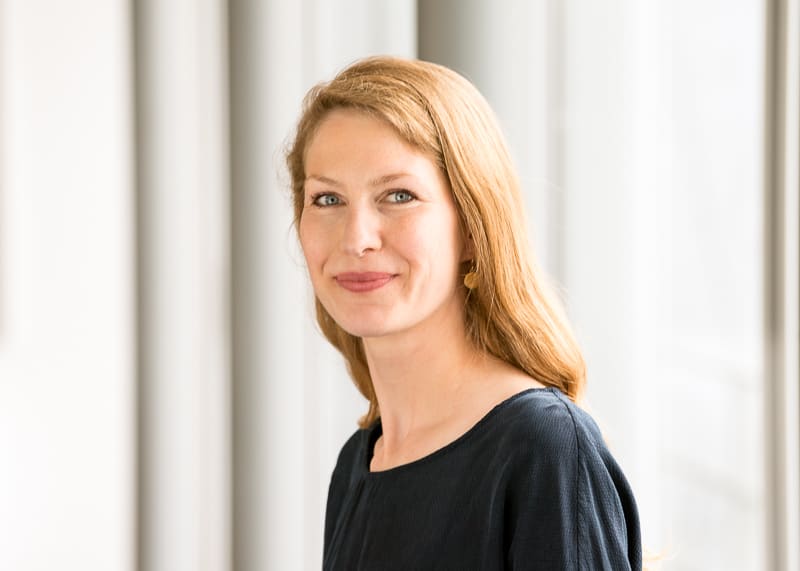Self-views impact educational outcomes
How children see themselves is affected by socioeconomic status, and shapes their achievement

Sarah Hofer has seen substantial evidence of educational inequality in the course of her career. Through her research, she seeks to understand the psychological factors at play and contribute valuable insights to policy and practice. Sarah tells Annie Brookman-Byrne about research she and several colleagues have conducted linking children’s views of themselves to their educational outcomes.
Annie Brookman-Byrne: What inspires your research into achievement inequality, and what did you find out in your recent study?
Sarah Hofer: Education is crucial for shaping a child’s future. It’s essential that all children have access to quality education so that they can achieve their full potential. Children from disadvantaged backgrounds continue to face numerous obstacles in accessing quality education. I am working to help identify ways to address these disparities and provide more equitable educational opportunities for all students.
“Children from disadvantaged backgrounds continue to face numerous obstacles in accessing quality education.”
Unfortunately, children from lower socioeconomic status backgrounds tend to have more negative self-perceptions. And these perceptions are often associated with lower academic achievement.
In our study across 70 countries, we looked at five key areas of how kids perceive themselves: their belief in their abilities, their confidence in their success, their attitude towards learning and improvement, their feeling of belonging, and their fear of failing. We then compared these self-perceptions with their reading skills.
We found that children’s self-views play a role in how their families’ socioeconomic status affected their reading skills. We also found that the area of self-perception where there was the strongest link between socioeconomic status and reading skills was children’s beliefs in their own abilities. Socioeconomic status appears to have an effect on children’s self-perceptions, and these self-perceptions, in turn, have an impact on their reading skills.
Interestingly, this link varied from one country to another. Children’s beliefs in their own abilities were especially helpful in countries with higher levels of social mobility and less helpful in countries where there was less social mobility. In other words, in countries where it is easier to move up the social ladder, believing in their own abilities helped children of lower socioeconomic status to become better readers.
“Boosting kids’ confidence in their abilities could help address the issue of educational inequality, especially in places with greater social mobility.”
Overall, our findings suggest that boosting kids’ confidence in their abilities could help address the issue of educational inequality, especially in places with greater social mobility. However, since children’s self-perceptions are not the only pathway through which socioeconomic status influences reading skills, other solutions are needed as well.
ABB: What would boost children’s confidence in their abilities, and what other solutions for reducing inequality would you like to see implemented?
SH: I would like to see educational policies and practices that help to create supportive environments and encourage positive self-perceptions, for example by providing more individualized learning opportunities. Tasks and support that are tailored to children’s existing resources, and at the same time focus specifically on the areas in which students have shortcomings, enable students to complete tasks and reach performance levels that would be impossible without individualized support. Such learning opportunities allow children to experience learning situations as challenging but manageable, and therefore as especially motivating. This enables them to feel competent.
In addition to providing individualized learning opportunities, strengthening kids’ beliefs in their abilities can be particularly effective at reducing educational inequalities. Interventions that encourage teachers and parents to praise children’s effort, strategies, and persistence, rather than innate talent, can help build resilience and confidence. Likewise, teachers and parents who acknowledge mistakes as learning opportunities reinforce children’s positive attitudes towards learning and improvement. Encouraging students to reflect on and write about their personal values, strengths, and successes can boost their sense of self-worth, especially in situations where children may feel stereotyped or marginalized.
While it’s crucial to work on kids’ self-perceptions, it’s also important for policymakers to address the bigger issues that children from lower socioeconomic backgrounds face, such as limited access to educational resources or decent housing. Unless we address the deeper structural barriers that exist, we risk unfairly placing the blame on children for their circumstances. Teachers and parents should be mindful of any negative stereotypes about the abilities of children from lower-income families and actively work to challenge those misconceptions.
ABB: Did anything surprise you as you were working on this topic?
SH: I was surprised by how varied the experiences and needs of disadvantaged students are. It’s clear that there isn’t just one group of disadvantaged learners who all share the same characteristics. Instead, there are substantial individual differences. Even within the sample of disadvantaged learners, focusing on broad, one-size-fits-all approaches to helping children is therefore likely to be less effective.
“We need a shift in perspective, emphasizing individual differences and resources rather than looking at deficits.”
Instead, my colleagues and I advocate for a more person-centered approach. This means moving beyond viewing disadvantaged children in terms of “deficits” relative to their privileged peers. We need to find innovative ways to collect and analyse various types of data to highlight the unique resources of each child. We need a shift in perspective, emphasizing individual differences and resources rather than looking at deficits in a group. This approach can help educators address the specific needs of each of their students more successfully.
I was also surprised to find that the impact of self-perceptions on achievement inequality varies across countries. This shows how important it is to consider multiple contextual factors and adapt strategies to the specific context when seeking to help children. I’m eager to delve deeper into this area. In future studies, I’d like to collect data on the same children living in different contexts over an extended period, starting at younger ages. This would lead to a better understanding of how self-perceptions develop and impact achievement over time.
Footnotes
Sarah Hofer is currently a professor for research on learning and instruction at Ludwig Maximilian University (LMU) of Munich. In her research, Sarah Hofer investigates individual, instructional and institutional factors that contribute to learning and educational success. She is a Jacobs Foundation Research Fellow.
Sarah at LMU
Sarah on ResearchGate
Sarah Hofer contributed to a special collection on understanding and addressing inequality in education in the journal npj Science of Learning. This interview is part of a series dedicated to sharing practical takeaways and personal insights from authors.
The interview has been edited for clarity.


